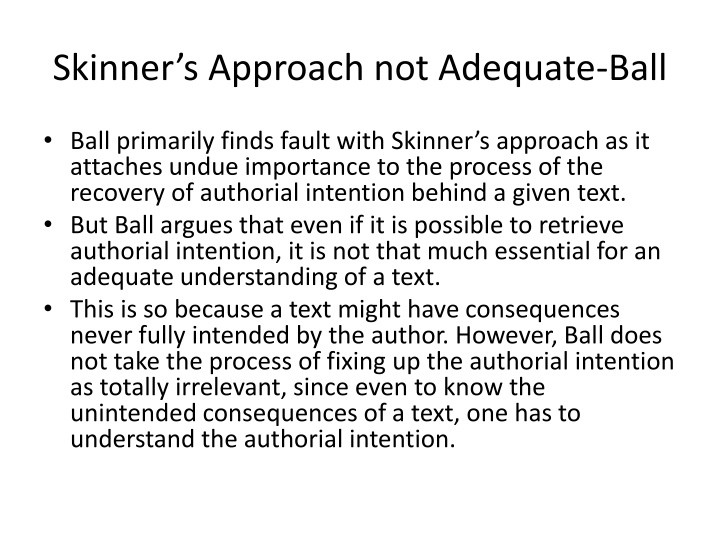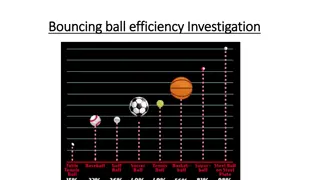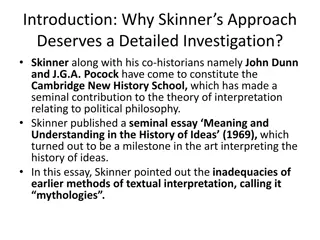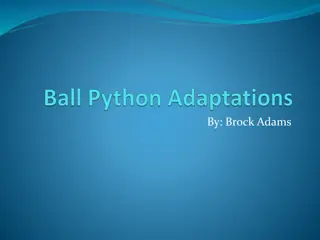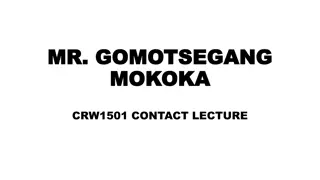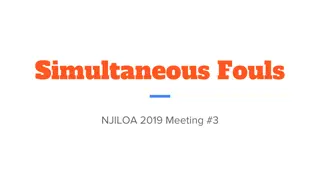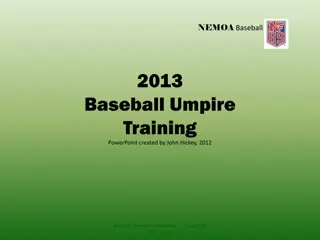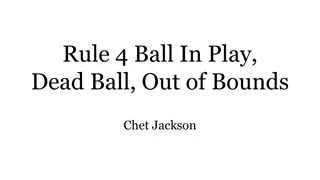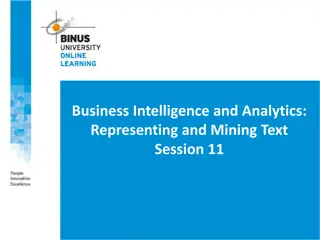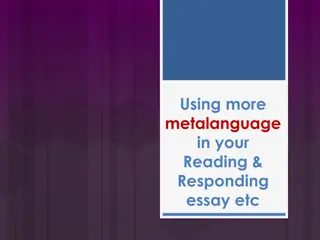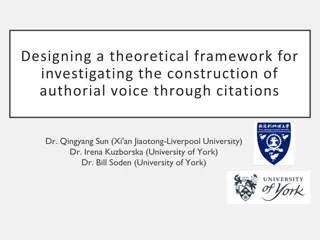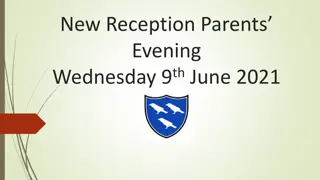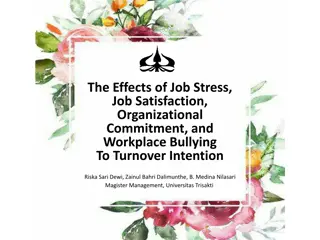Exploration of Authorial Intention and Text Reception by Terence Ball
Terence Ball critiques Skinner's emphasis on authorial intention recovery, highlighting how understanding unintended consequences of texts is crucial. He delves into the significance of reader interpretation, proposing a theory of three-cornered fight to navigate diverse perspectives in text analysis, drawing parallels between natural sciences and political theory.
Download Presentation

Please find below an Image/Link to download the presentation.
The content on the website is provided AS IS for your information and personal use only. It may not be sold, licensed, or shared on other websites without obtaining consent from the author.If you encounter any issues during the download, it is possible that the publisher has removed the file from their server.
You are allowed to download the files provided on this website for personal or commercial use, subject to the condition that they are used lawfully. All files are the property of their respective owners.
The content on the website is provided AS IS for your information and personal use only. It may not be sold, licensed, or shared on other websites without obtaining consent from the author.
E N D
Presentation Transcript
Skinners Approach not Adequate-Ball Ball primarily finds fault with Skinner s approach as it attaches undue importance to the process of the recovery of authorial intention behind a given text. But Ball argues that even if it is possible to retrieve authorial intention, it is not that much essential for an adequate understanding of a text. This is so because a text might have consequences never fully intended by the author. However, Ball does not take the process of fixing up the authorial intention as totally irrelevant, since even to know the unintended consequences of a text, one has to understand the authorial intention.
Skinners Approach(Cont.) Terence Ball is simply underscoring the point that it might prove to be the starting point, the base, for an enquiry which has certainly to go beyond it reaching the point of reception, the reader s response. This is so because a text is not merely an artefact produced by the author but it is also a piece of communication to be received by the reader/interpreter. In fact, a book has a life of its own, even an after-life. However, one cannot concentrate on the text and its contexts simply setting aside the existing interpretations. This is so for two reaons:
A Theory of Three Cornered Fight: Imre Lokota i. One, our reading of the text and different aspects of its context is bound to be coloured by its various interpretations we have come across. Two, such an approach would also help us in making a fair evaluation of our own interpretation in the light of others. The process runs like this. When we take up a text for interpretation, we approach it through another available interpretation. Then we counterpoise with a second interpretation or by our own interpretation. This is how we get into the crux of the text. ii.
A Theory of Three-Cornered Fight: Imre Lokota (Cont.) Such a process might yield a new, novel interpretation of a given text. Here Ball refers to Imre Lokota, a natural scientist, who has propounded a theory of three-cornered fight between a given scientific data and two or more contending interpretations. Even in the case of natural sciences, no data is free from a theoretical perspective. In fact, the entire process of collection and processing of data is coloured by the researcher s theoretical perspective. Thus, one could reach the truth only through the process of three-cornered fight between the data and two rival interpretations.
A Theory of Three-Cornered Fight: Imre Lokota (Cont.) Ball argues that this as true of scientific study as of political action or political theory. The only difference in the case of political theory is that on account of its scholarly nature, a certain level of intellectual integrity would have to be maintained. For example, a scholar could not afford to misquote or quote out of context, or suppress counter-evidence to bolster up his/her own interpretation. This is precisely so because the primary seeking of a scholar is to find truth and not to promote a particular cause or line of thought.
A Theory of Three-Cornered Fight: Imre Lokota (Cont.) One interpretation of data is challenged by another, and both are assayed according to available evidence (textual, linguistic, historical, etc.). But since such evidence is rarely self-evident, it requires interpretation to bring out its meaning and significance for bearing on the problem at hand . Thus, a rival interpretation is indispensable. Ball does not object to Skinner s underlining the social, linguistic, political and intellectual context of the text. Ball calls it the context for the composition of the text.
A Theory of Three-Cornered Fight: Imre Lokota (Cont.) But he is for extending the meaning and scope of the context to the other end of the context-the successive contexts in which the given text has been received, read and interpreted. Thus, while Skinner is underlining the context of the composition of the text, Ball also underscores the context of its reception. Ball s interest in the authorial intention arises from the fact that even for gauzing the unintended consequences of a text, knowing its original intent still remains important.
Terence Balls Five-Point Strategy for Interpretation For Ball both authorial intention and the context of the composition of the text remain important only so far as they are relevant for the interpretative problem the interpreter is grappling with. It is with such a viewpoint that Ball suggests a five- point strategy for interpretation which is as follow: First, an interpreter would have to make an intelligent choice of an appropriate method for interpretation. The nature of the method would be decided by the nature of the particular interpretative problem that is being addressed to. No single method could be recommended for all types of interpretative problems. In Ball s words, A method is not like a stretch sock: one size does not fit all feet.
Terence Balls Five-Point(Cont.) Second, the sources of these interpretative problems could also be varied. They could be contemporary, historical, literary, logical and philosophical, to name just a few. It is the nature of the interpretative problem which provides the vantage point for any task of interpretation. Third, any given text under interpretation would have to be put under two contexts: the context of its composition and the context of its reception at the hands of readers and interpreters.
Terence Balls Five-Point(Cont.) Fourth, our primary attempt should be to see in which way the text and its subsequent interpretation could throw some light on our contemporary problems. For instance, while looking into Hind Swaraj, one could legitimately pose the problem whether or not its concept of swaraj helps us to throw some light on the problem of participatory democracy we are confronted with. Fifth, our primary concern should be to show that a great deal could be achieved by following a pluralist and problem-centric approach to interpretation.
Concluding Observations Terence Ball has an eclectic approach which he would employ while studying any given text. For him there could be no single method or strategy for the task of interpretation. One could choose from a variety of strategies depending upon the nature of the interpretative problem. Ball might even recommend syncretical approach to be employed if the need arises. Terence Ball s approach to interpretation has taken it to a new level and thus it is much more comprehensive and acceptable in modern times.
